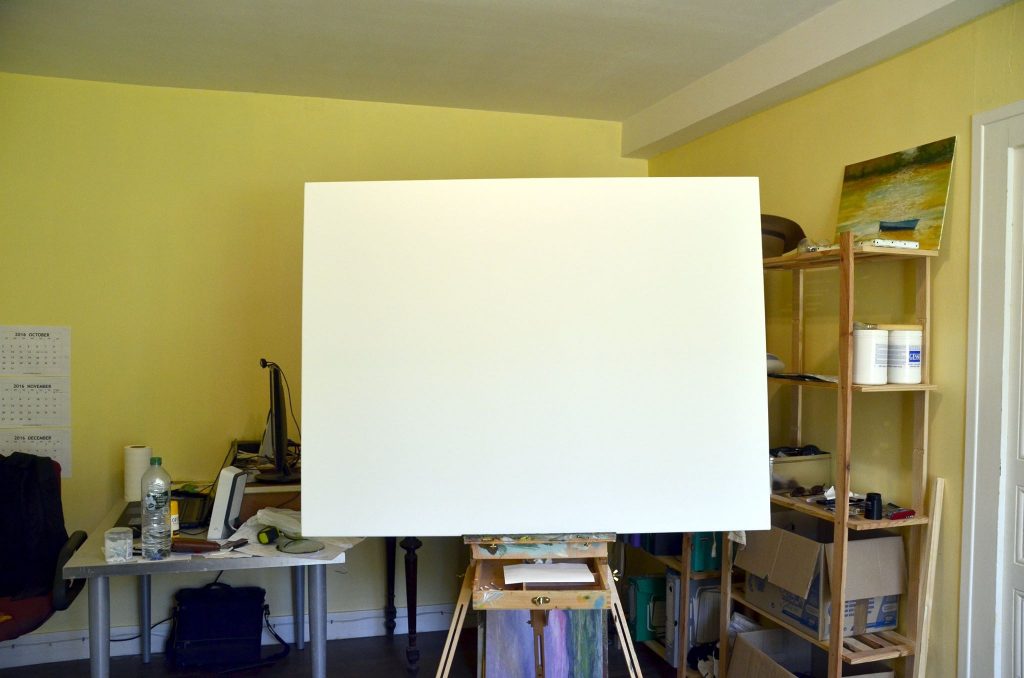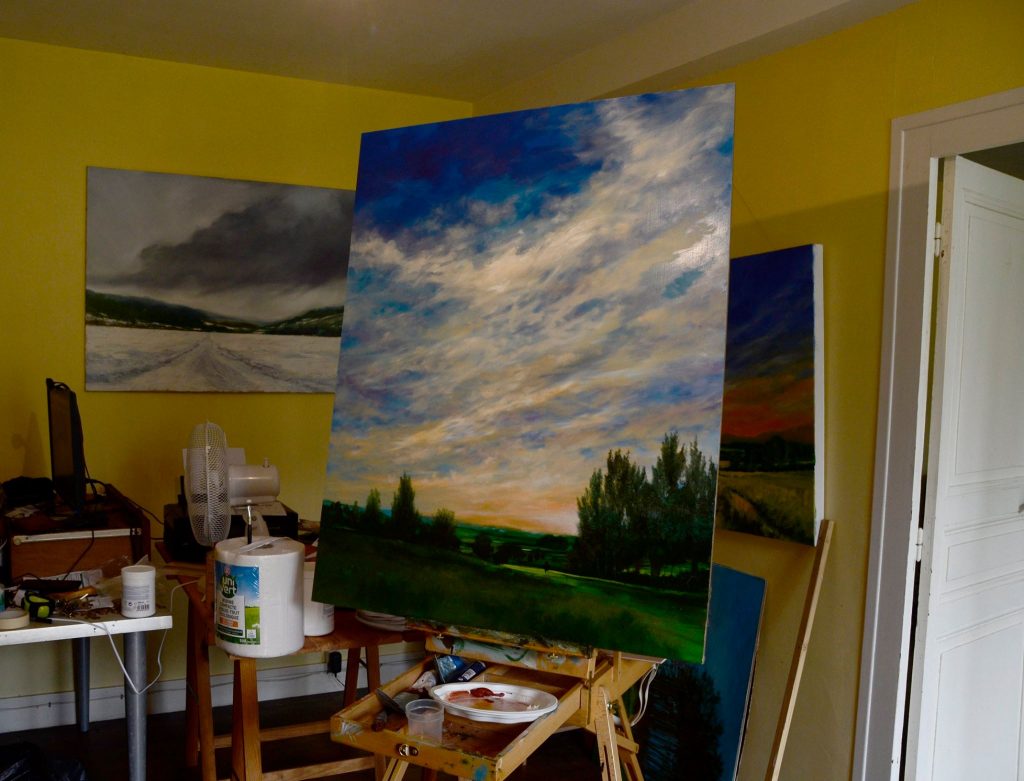
Hello! Stuart Davies here. Since I began my art career at the bright and chipper young age of 15, I’ve gathered one or two tricks that I’m delighted to share with you now. As an oil landscape tonal impressionist, some tips are geared toward my particular medium, but there are more general tips that can apply to other mediums as well, for those of you who for instance, work in watercolors (I could never get the swing of that!). I hope you learn something helpful…
WHEN STARTING A PAINTING
- Get yourself in a relaxed state of mind before you paint. I like to take walks and listen to music.
- Don’t be afraid to make mistakes. It’s the only way to learn and the only way to invent tips that you’ll pass down yourself someday.
- You don’t need to draw before you paint. Trees, for example, continually change. No sense trying to capture an image as it is now. By drawing with paint rather than pencil, your image is loose and lively, and you aren’t restricted by lines. So to paint outside the box, paint outside the lines!
- Thinking of taking lessons? Always remember a good teacher doesn’t actually teach you to paint; rather he brings out the gifts already within you. He can, however, teach you about elements of painting, such as composition—for example, the rule of thirds. In painting landscapes, it works like this. If the is sky is boring or you don’t want sky, leave it out. If it is boring but you want it in, have it be no more than a horizontal third of the painting.
MID PAINTING
- When you paint your picture, don’t forget where your light source is coming from. If you do, you’ll end up with a painting that might look as though it has two suns.
- Don’t worry about perspective. It usually comes by instinct. A simple trick is that things farther away contain more light blue, and things closer contain more red. Check out the Tyndall effect which is caused by dust particles in the atmosphere.
- Know your Golden Spot. It’s the halfway point above center and just slightly to the right. You can see this in most of the major collections of old masters.
- The eye loves contrast. Have you ever looked into a bright sunrise or sunset that was really too bright to look at but you kept taking peeks anyway? I regularly employ what I call the Twinkle Factor, lights against darks and darks against lights, to give the eye what it longs for.
- It’s also a good trick to have shapes that work on the subconscious to draw the eye to an area. You don’t need to frame anything intentionally though. You can use lines that subtly suggest, “over here.”
- Not all colors have to be mixed. Don’t be afraid to use paint straight from the tube. It’s not cheating! Colors don’t have to be meticulously blended either because you can spend hours carefully blending lights and darks and end up with something overworked and plastic.
- Don’t try and paint what you see. Create the illusion of what you see. Don’t create clouds, for instance; create the illusion of clouds.
- Don’t clean your palette (unless it becomes five inches deep) because when mixing colors, you want to see how a color acts or reacts next to another color. If you have a white palette, you’ll only see what the color looks like on white, and the surrounding white will flood it out.
- Don’t mix turps with your paint. Save it for cleaning brushes. Use either refined linseed, poppy or copal oil to make paints more fluid. Use a rag or kitchen towel to wipe back any areas that will require lightening later. This trick thins down the background color so you can paint safely over it.
- Turps can give me a headache, even the odor-free variety. Keep them in a sealable wide mouthed container like a jelly jar with a tight-closing spring lid.
- For final highlights, try a palette knife.
- Allow plenty of drying time of between coats of paint to prevent cracking.
AFTER PAINTING
- Don’t waste your money on expensive brushes from art shops for oil paintings. For putting down blocks of color, use cheap DIY-store brushes. You can survive with 6 or 7 standard oil painting brushes.
- 18. Keep your old brushes. Letting an old brush go fuzzy can help obtain leafy detail on a tree effortlessly.
- 19. Don’t varnish your completed paintings until a year after you finish. Varnishing too soon causes ripples or little waves. To prevent this, wait a good year and use water-based varnish. It can then be washed off once it starts to yellow years from now. When I sell a painting I haven’t varnished yet, I simply include a bottle of varnish along with instructions.
- 20. When not using your brushes for a month or more, wash them with dish soap to prevent them going hard.
That’s all for now, folks. Remember: Believe in and encourage yourself. I wish you happy painting!
